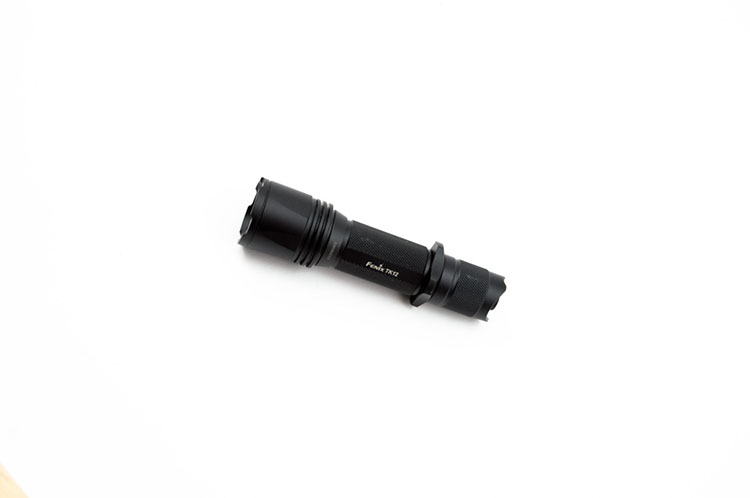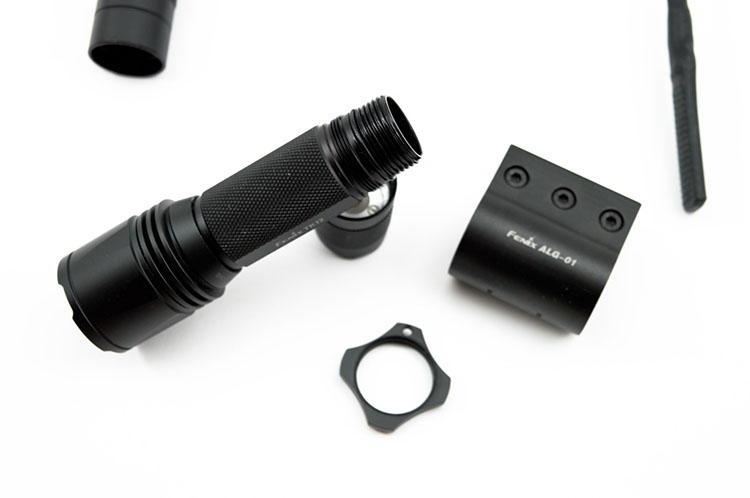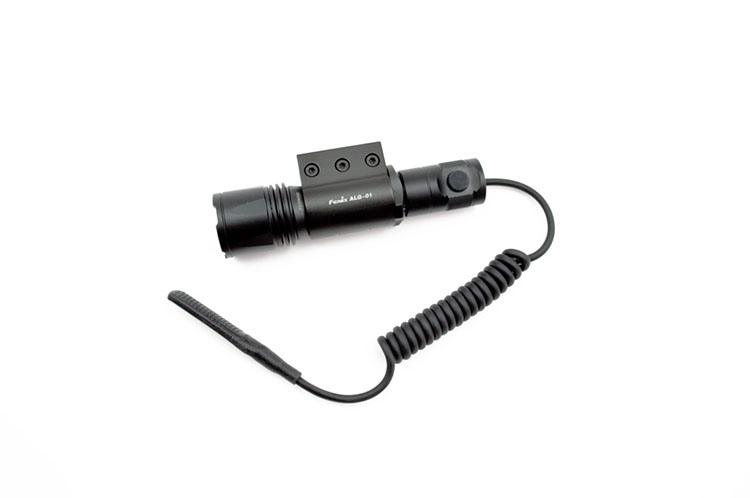

In other words, I was being a bit of a dim bulb.
Because within mere minutes of taking receipt of this Fenix TK12 flashlight and its associated accessories (available at Outdoor Pursuits Canada, whose ad on the following page also rewards Calibre readers with a 5% discount on all purchases), it became readily apparently that LED flashlights are quite simply better in every way than their older incandescent counterparts... and in the case of Chinese-made Fenix brand lights, they're not even significantly more expensive. But more on that later.

Well, the most obvious difference one first notices with a decent LED flashlight that trades candlepower for lumens is the uninterrupted beam it throws. Due to the tiny LED cell, there's no big bulb protruding into the middle of the reflector array, so the light generated is cleanly reflected out of the front of the flashlight and throws a perfectly round and flawless beam. The second thing one is liable to notice is just how bright they are.
And we're not talking "wow, you can see a lot of stuff in the dark" levels of brightness; in the case of the 450-lumen TK12, it's more like "holy crap that's blinding and disorienting" if you ever end up looking into the wrong end of it. This is partly due to Fenix' use of Cree brand LED lights. The single best supplier of LED systems, Cree LEDs are typically used in industry applications, such as within the headlights and taillight assemblies of Lexus automobiles or in aircraft lights. They are vastly more expensive than cheap Chinese no-name LED elements and exceed pretty much all others in terms of power management and light output.
Which brings us back to Fenix' Chinese manufacturing. By matching good switchgear, glass, and reflectors with the best LEDs money can buy, Fenix has ensured their lights have a great foundation. That they then stick those components into machined aluminium bodies produced using far more affordable Chinese CNC machine time means they significantly reduce their costs. As a result, Fenix lights carry far lower price tags than many other Cree LED-powered flashlights, but still put out competitive levels of light and have comparable run times.

Used as a conventional flashlight, the TK12 is obviously more than up to the task. With the also-optional rechargeable lithium batteries (really, a must have) providing just over 2 hours of run time on high by our measure, and more run time on low than I cared to measure (Fenix specifies 65 hours), there's more than enough juice in there to handle most tasks. That's one of the benefits of LED lights; where my old Maglite always seemed to be running low on batteries, this TK12 just kept powering through. And when the power output of the battery was no longer sufficient to maintain the high setting, it simply clicked over to medium and kept going, which is a great feature to have.
Now, there are two things I would point out to any would-be buyer of the TK12 specifically. First off, it's not a great shape for pockets or any shape or size. Sure, it's short, but it's very fat and the additional squared ring around it's body makes it even more bulky (it does keep it from rolling, though). Secondly, due to its design as a tactical light, it always comes on in its brightest setting. Now, that's great when you're using it as a momentary-switched weapon light, but when you're trying to read a map and the glare of 450 lumens blasts your retinas into kingdom come on an otherwise dark night, it's less useful. However, I would point out that both of these issues are specific to the TK12, and there's plenty of other Cree-powered Fenix lights that are smaller and switch on in the same mode they were switched off from.
Obviously, I have been very impressed by this little light, and can say that since Outdoor Pursuits Canada's shipment containing it arrived at my doorstep, all other flashlights have been gone completely ignored. It's quite simply smaller, brighter, and longer-lasting than any of the Maglite's I've used for years, and although it hasn't yet rolled off a cliff, I have no doubt that it will fare just as well. And sure, it's not a Surefire or other such brand, but with a price tag of $60 as opposed to $260 for some comparable lights, I'm much more comfortable simply tossing this light around and not being paranoid that it get scratched, broken, lost or stolen. In fact, I've liked it so much, that by the time you're reading this, I will have already ordered another Fenix light for myself, and a couple more for the staff!